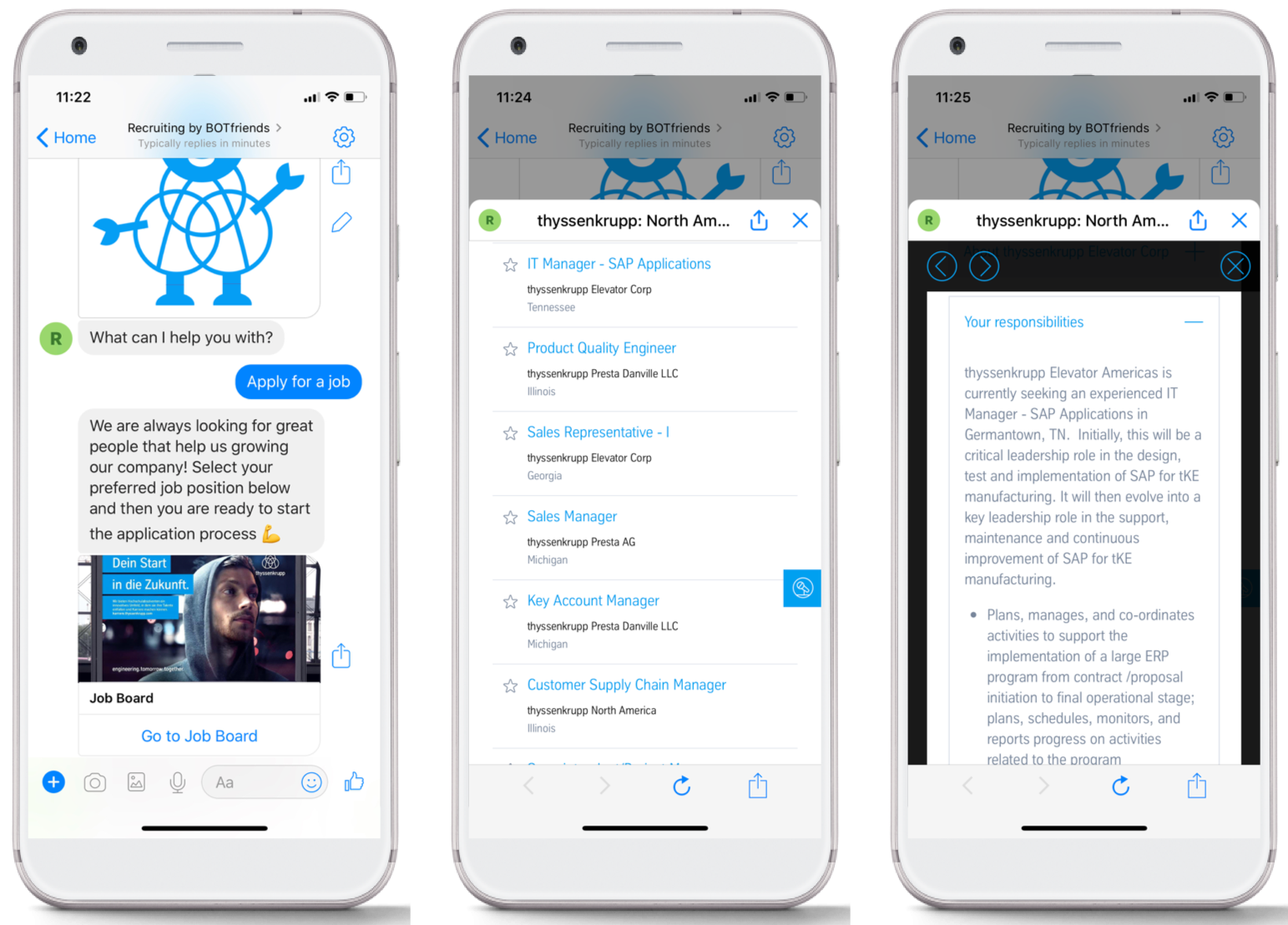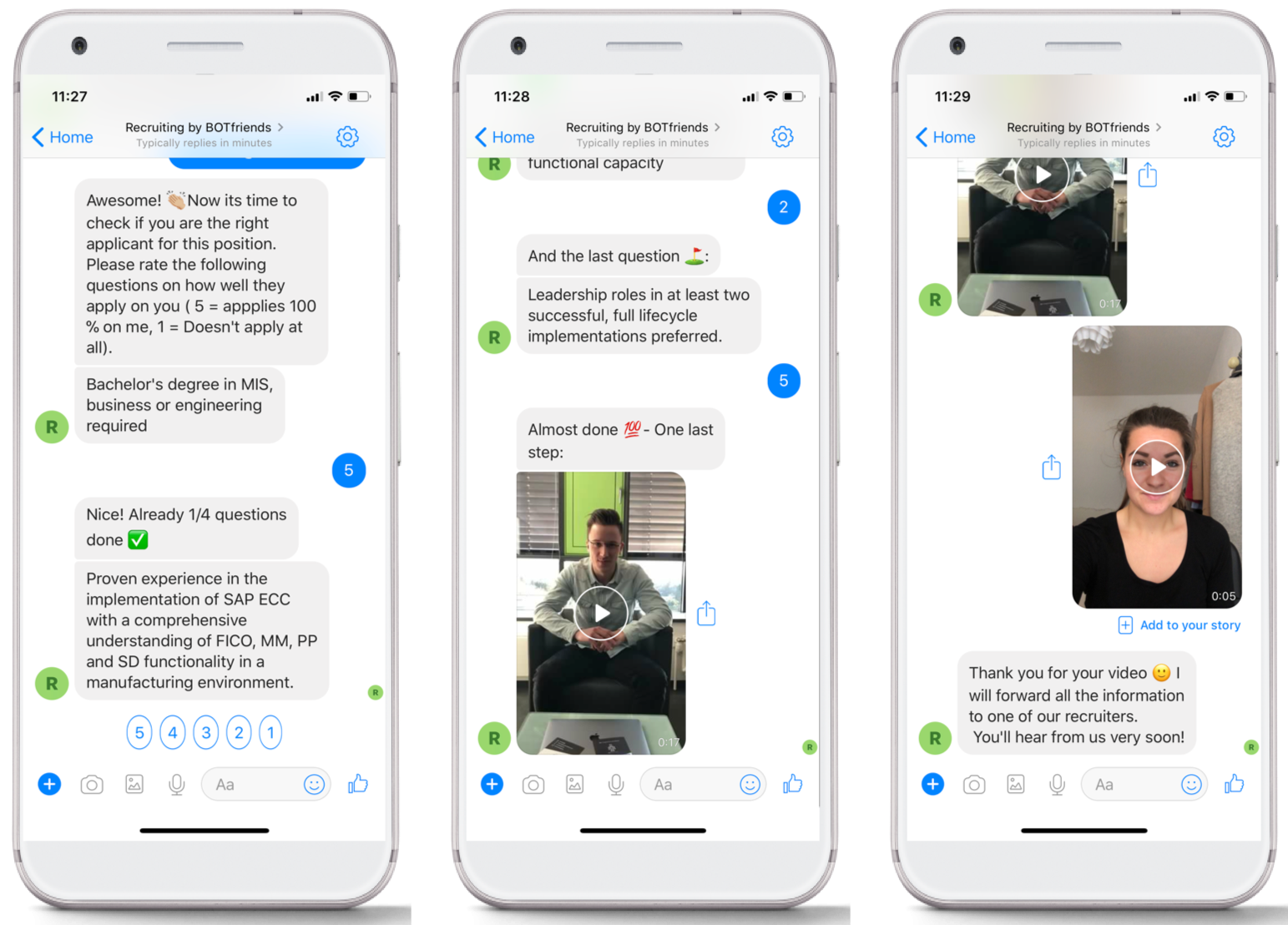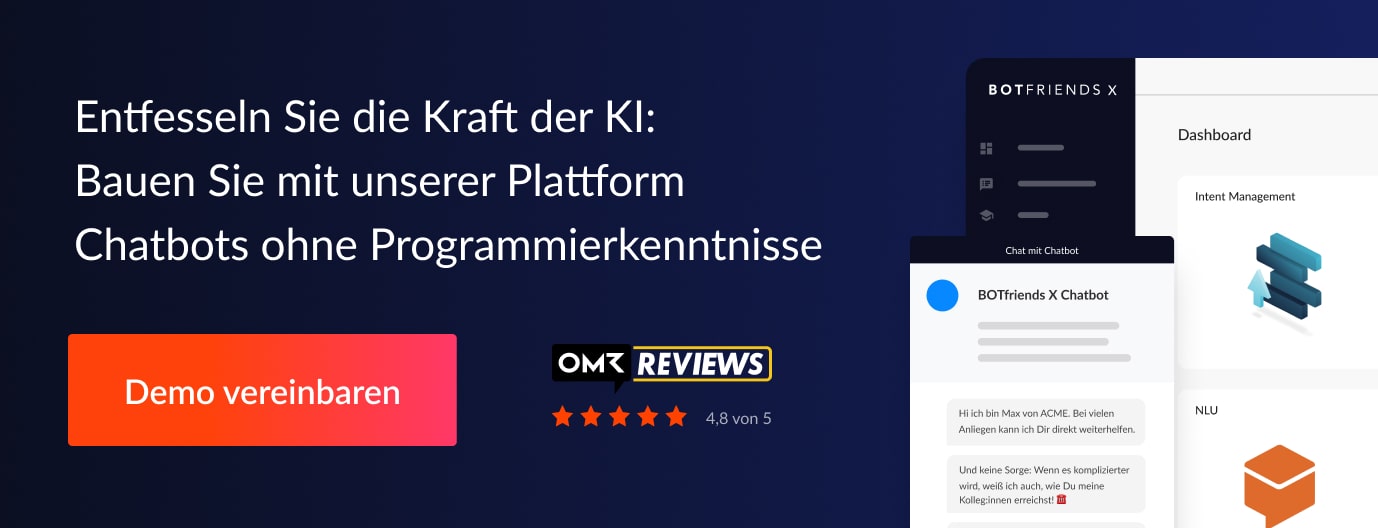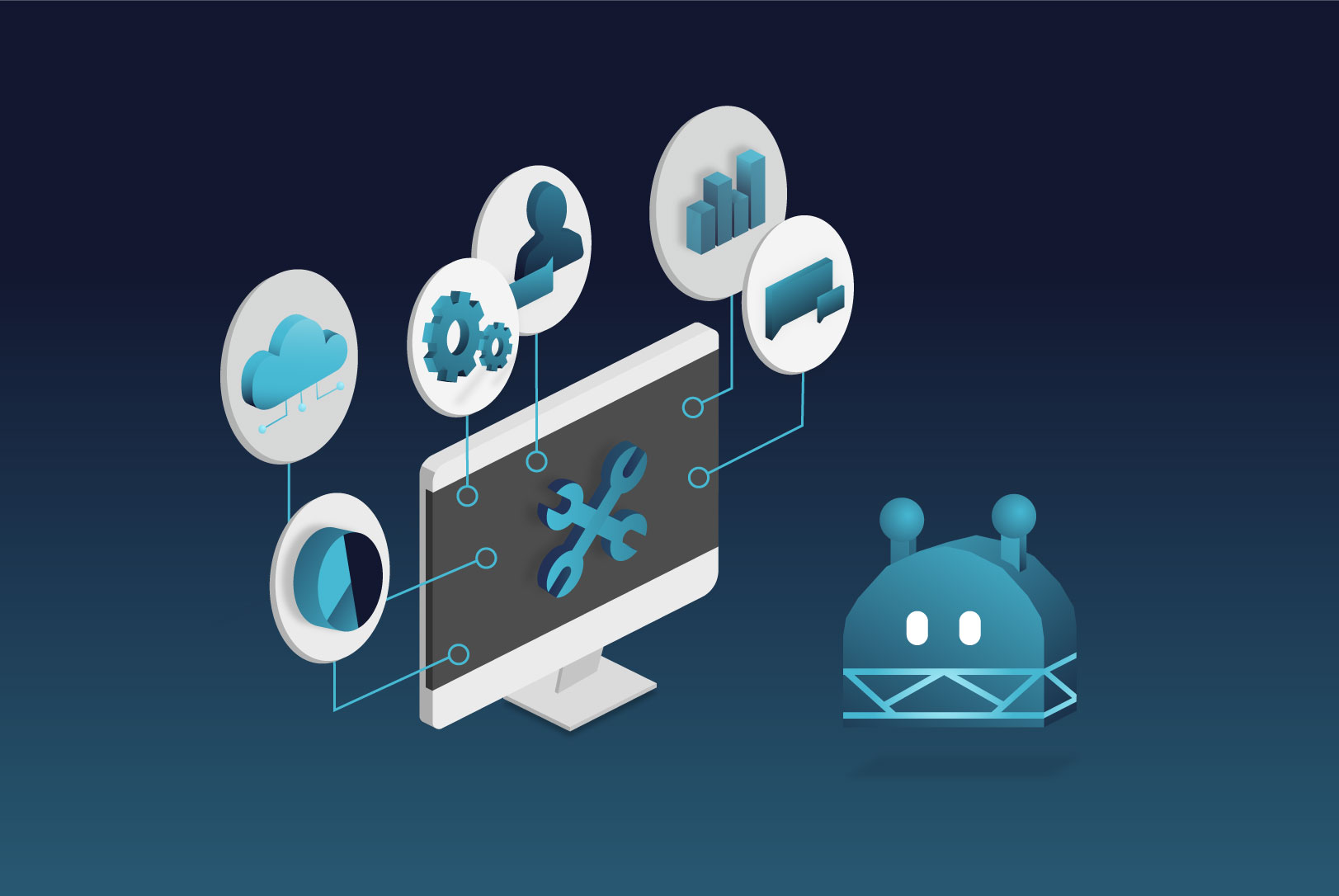Just last week we visited Beyond Conventions , where we participated in a pitch challenge competing for an HR chatbot for ThyssenKrupp. Among other things, this event is proof that it is definitely necessary to develop new ideas and innovations in order to stand out as an employer:in between all the sought-after qualified employees. Therefore, in order to do a good job in employer branding, companies must understand the need to be present and active on all social media channels. As Generations Y and Z get older and ready to enter the business world, it becomes more natural to learn about career opportunities not only through the website, but also through social media such as Facebook Messenger about the company. We'll be posting a series on demos, concepts, insights and more on HR chatbots.
In this blog post, we explain the showcase we developed for our HR Chatbot Pitch for ThyssenKrupp. You will learn how to perform one of many application processes in Facebook Messenger. This process includes collecting information about candidate:s, asking them screening questions, and placing them.
Step 1: Selection of a job
- First of all, you need to create an intention that starts the application process. This should also be integrated into the navigation as a quick response (button).
- The next step is to integrate a job overview as a WebView of the respective website so that users can select their preferred job for which they want to apply.
- So how does the chatbot know which job was selected by the applicant? Firstly, all website URLs of the job offers must be entered in the whitelist on Facebook. By integrating the Messenger Extension SDK on the website, we can enable communication between the bot and WebView. So when the user clicks on a button, e.g. "Apply now" within the WebView, an action can be triggered that closes the window and sends the job for which the user wants to apply to the chatbot in the parameters.
Step 2: Collect information
- The first step is to ask the applicant for their resume or other relevant documents. It is important to know that users are not able to upload a PDF file on Messenger via cell phone. It can only be transferred via desktop. However, you could offer the user to upload a picture or screenshot of the resume. Of course, this must be clearly communicated to the user in advance.
- Once the applicants have uploaded the files, we recommend integrating an API that can automatically extract all the information such as contact details about the candidates. For example, we use the Vision API from Google to extract the text from the uploaded image and then we search for specific entities via Google's NLP APIs to find the individual pieces of information. You can also implement a method to request missing information if someone forgets to include it in the documents (see example image).
Step 3: Questions on the screening question and ranking candidates
Ask screening questions
The 3rd step is to actually see if the candidate is the right one for the position by testing how well he/she meets the requirements of the job ad. In this case, you can use existing requirements from the job postings. This sounds like a lot of work if you have to insert all the requirements from thousands of job postings into the chatbot, but there is actually a very scalable way to automate this. Just by integrating an API into a CMS or other system where information is stored, you can use it immediately in the chatbot.
Tendrils from candidate:inside
In order to be able to rank the applicants, it is possible to create a scale from 1 to 5, where the user or the user has to choose a number, how well he or she meets the requirements. Choosing a 5 means that he or she meets the requirements by 100% and a 1 obviously means the opposite. After the candidate has answered all the screening questions, the chatbot calculates a score in the background about how well the job matches his or her qualifications and skills, which gives recruiters the opportunity to compare applicants. By the way, it is also possible to give certain requirements a different weight in the score calculation. For example, some requirements might be more important than others, e.g. 5 years of experience in programming might be more crucial than a degree in computer science with a scarce background.
In the final step of the process, the user is asked by a recruiter to upload a personal video of him or her explaining why he or she wants to work for the company (or another question, related to the company culture and values ). This creates a personal experience for potential employees, which can also lead to a unique branding effect. The video of the candidate:s is the perfect opportunity to give a good impression and show if they are a good fit for the company.
Step 4: Integration of the Chatbot application into the regular recruitment process
After users finish the process, the chatbot collects all the information (see image above). Now there are several ways to handle received applications. It can either be emailed directly to a recruiter or integrated into an application tracking system (ATS). The score given by the screening questions could help recruiter:s prioritize applications.
We hope this has given you a good insight into how to create an application process for a chatbot.
If you would like to learn more about voice and chatbots and their use in HR and internal communications, feel free to visit our page on the topic.







